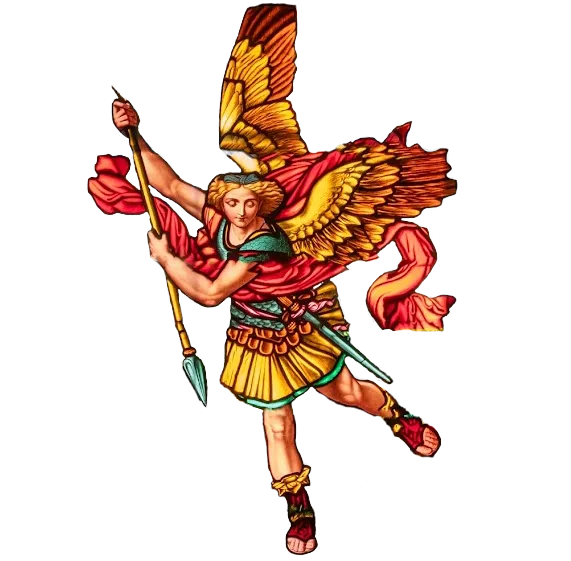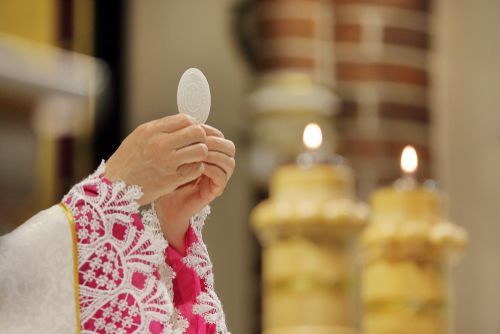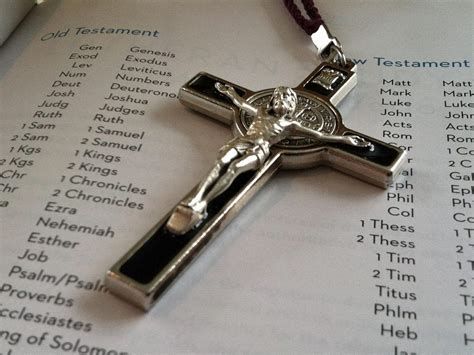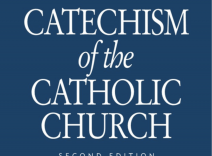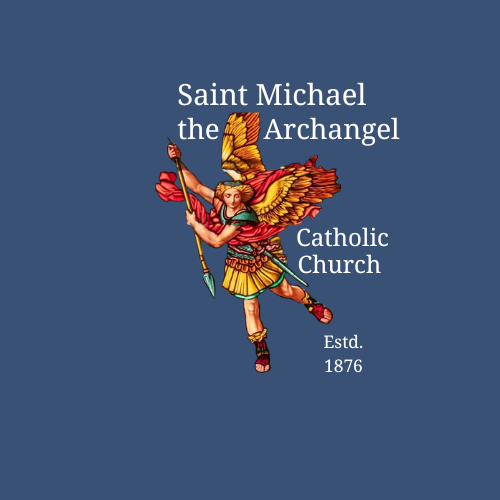Catechism of the Catholic Church
The Catechism of the Catholic Church contains the essential and fundamental content of the Catholic faith in a complete and summary way. It presents what Catholics throughout the world believe in common. It presents these truths in a way that facilitates their understanding.
The Catechism presents Catholic doctrine within the context of the Church's history and tradition. Frequent references to Sacred Scripture, the writings of the Fathers, the lives and writings of the saints, conciliar and papal documents and liturgical texts enrich the Catechism in a way that is both inviting and challenging. There are over three thousand footnotes in the Catechism.
The Catechism is part of the Church's official teaching in the sense that it was suggested by a Synod of Bishops, requested by the Holy Father, prepared and revised by bishops and promulgated by the Holy Father as part of his ordinary Magisterium.
Always be ready to give an explanation to anyone who asks you for a reason for your hope, but do it with gentleness and reverence, keeping your conscience clear...
How should the Catechism be used?
The Catechism of the Catholic Church is a teaching tool. It is a concise explanation of Catholic beliefs. The Catechism includes quotations from many papal encyclicals, church council documents, and the Scriptures. It refers to these as reference points for Catholic teachings.
Although it is important, the Catechism is not considered a sacred text like the Bible. In fact, the Catechism we have now is fairly recent, although it describes ancient beliefs. The Catechism helps to consolidate all of the Church’s teachings into a handy reference.
Online Version of the Catechism at the United States Conference of Catholic Bishops (USCCB) Website
What is a brief history of the Catechism?
The Catechism of the Catholic Church originated with a recommendation made at the Extraordinary Synod of Bishops in 1985. In 1986 Pope John Paul II appointed a Commission of Cardinals and Bishops to develop a compendium of Catholic doctrine. In 1989 the Commission sent the text to all the Bishops of the world for consultation. In 1990 the Commission examined and evaluated over 24,000 amendments suggested by the world's bishops.
The final draft is considerably different from the one that was circulated in 1989. In 1991 the Commission prepared the text for the Holy Father's official approval. On June 25, 1992 Pope John Paul II officially approved the definitive version of the Catechism of the Catholic Church. On December 8, 1992 Pope John Paul II promulgated the Catechism with an apostolic constitution.
What is the purpose of the Catechism?
The Catechism serves several important functions:
- It conveys the essential and fundamental content of Catholic faith and morals in a complete and summary way.
- It is a point of reference for national and diocesan catechisms.
- It is a positive, objective and declarative exposition of Catholic doctrine.
- It is intended to assist those who have the duty to catechize, namely promoters and teachers of catechesis.
For more frequently asked questions regarding the Catechism of the Catholic Church, visit the United States Conference of Catholic Bishops (USCCB) website
For whom is the Catechism intended?
The Catechism is intended, first of all, for bishops as teachers of the faith and pastors of the Church. They have the first responsibility in catechesis. Through the bishops, the Catechism is addressed to editors of catechisms, priests, catechists and all others responsible for catechesis.
It will also be useful reading for all the faithful.
While the Catechism is not intended for direct use by young people or children, Pope John Paul II said that the Catechism "is offered to all the faithful who want to understand better the inexhaustible riches of salvation."
How is the Catechism organized?
The Catechism of the Catholic Church, like the Catechism of the Council of Trent, is divided into four major parts. They are referred to as the "four pillars" on which the Catechism is built. In his Apostolic Constitution promulgating the Catechism, Pope John Paul II called them the "four movements of a great symphony."
The four major parts are the Catechism:
1) the Creed (what the Church believes),
2) the Sacraments (what the Church celebrates),
3) the Commandments (what the Church lives), and
4) the Our Father (what the Church prays).
The Catechism consists of 2,865 paragraphs, each of which is numbered. There is an internal cross-referencing system among the paragraphs which makes it simple to find all the passages in the Catechism which treat a particular subject.
In addition, the Catechism provides several indices for ease in locating particular passages. Indices are organized according to themes, Scriptural citations, symbols of the faith, documents of ecumenical councils, documents of other councils and synods, pontifical documents, ecclesiastical documents, canon law, liturgical texts and ecclesiastical authors.
Core Catholic Beliefs
Discover some of the core beliefs of Catholics and the Truth as revealed by God.



